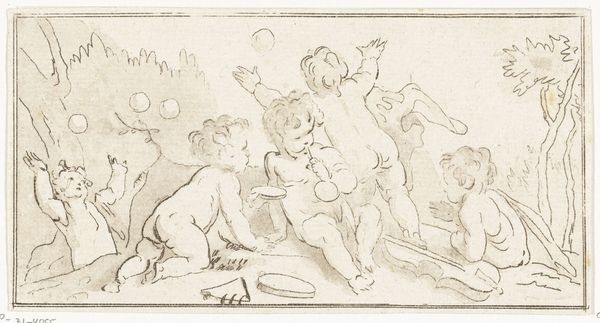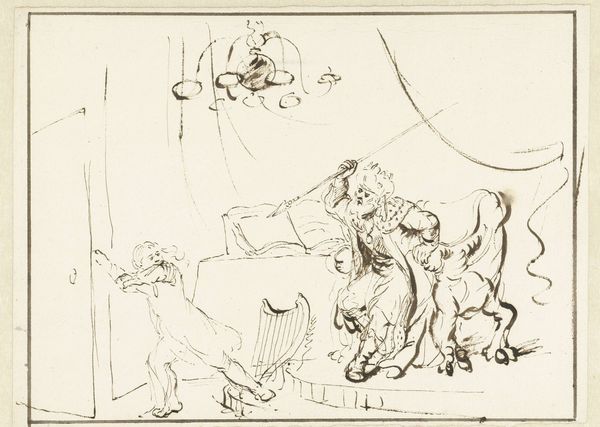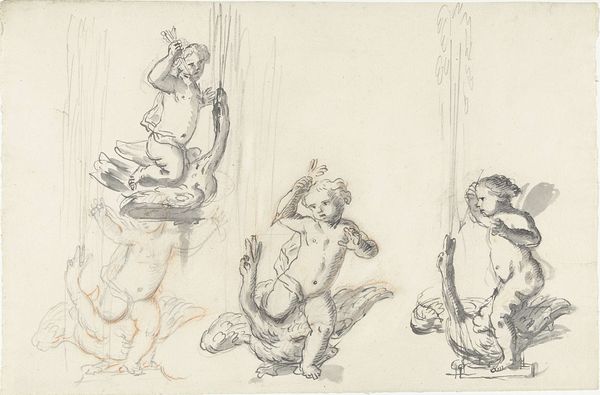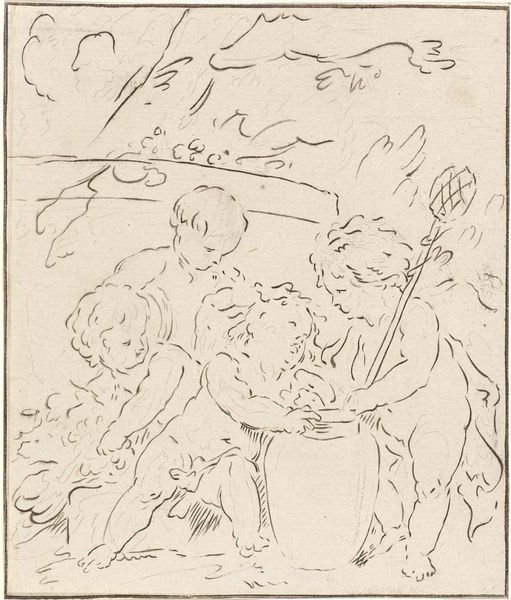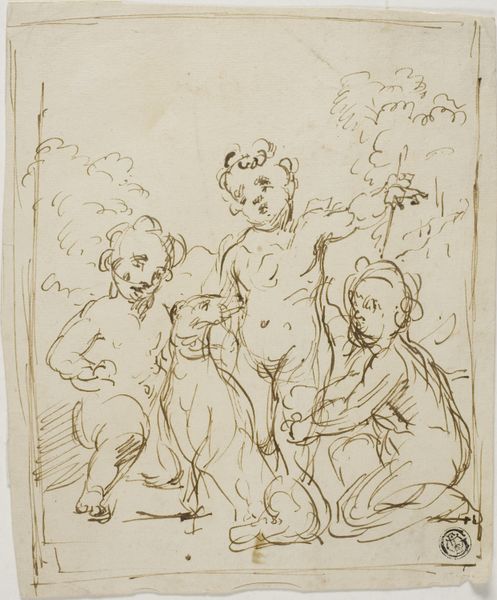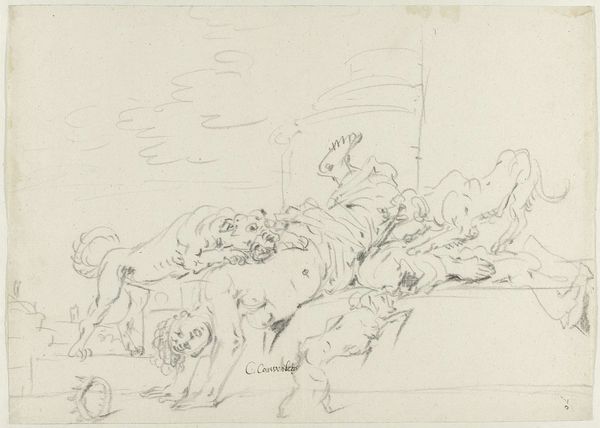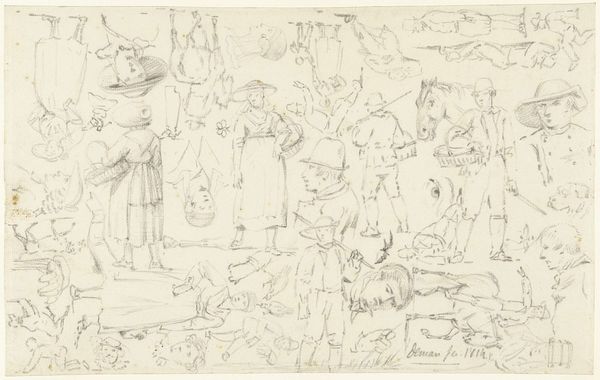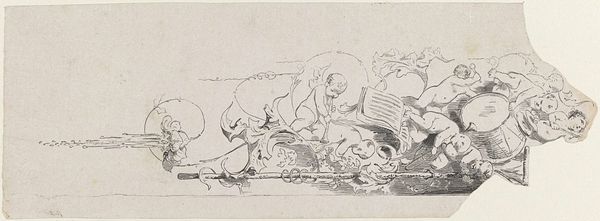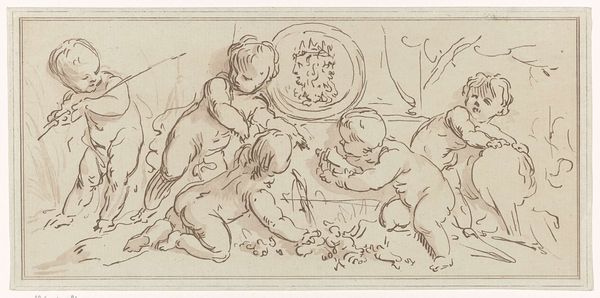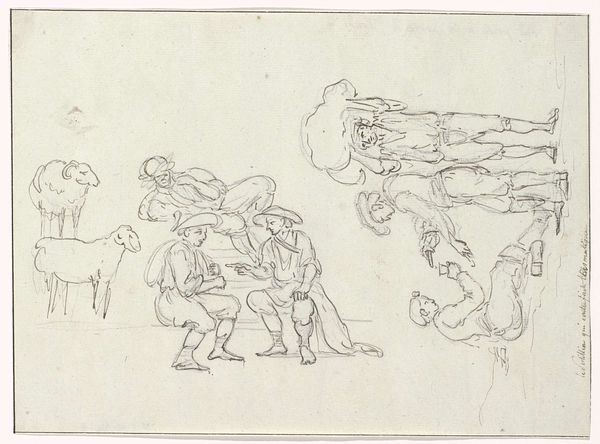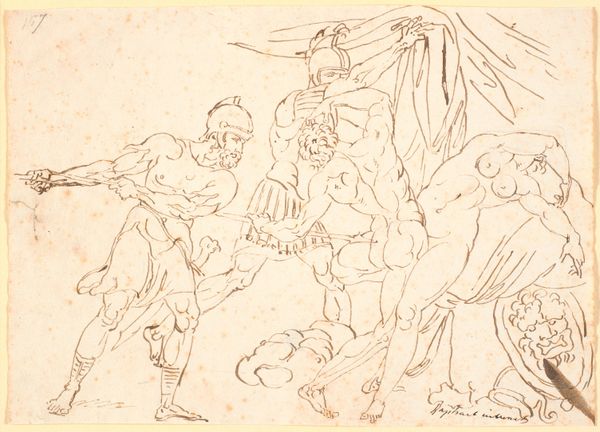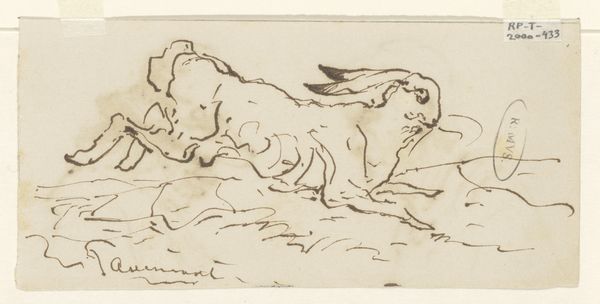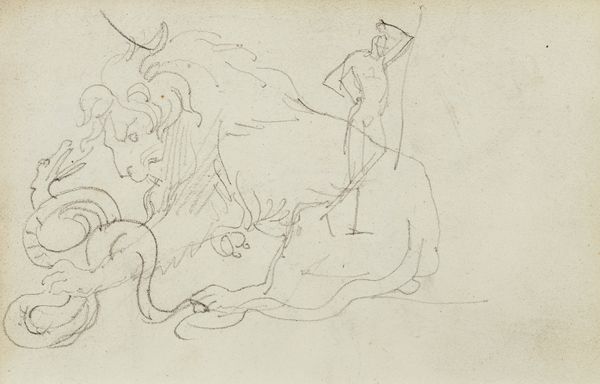
Dimensions: height 90 mm, width 180 mm
Copyright: Rijks Museum: Open Domain
Curator: Well, this looks lighthearted. What am I looking at? Editor: Here we have "Bellenblazende putti," or "Bubble-blowing Putti," an ink drawing by Anthonie van den Bos, dated sometime between 1778 and 1838, and housed here at the Rijksmuseum. Curator: Immediately, my focus is drawn to the technique, how he manages such playful lightness with just simple ink on paper. The quick strokes definitely highlight his skilled craftsmanship. Editor: Right, and it's worth thinking about the history of the Rococo period itself—the emphasis on ornate detail and playful themes. The choice to portray putti blowing bubbles is certainly steeped in cultural meaning, representing the fleeting nature of life, perhaps? Curator: Exactly, but consider the making. Ink was a readily accessible material, indicating this was likely a sketchbook drawing, used as practice for larger works. Did this one end up in the hands of private collectors, adding to the art market? Editor: It's definitely been part of collections and ultimately found its place in the Rijksmuseum. Drawings such as this contribute to art historical narratives through their very preservation, highlighting the shift in value and viewing of process. Curator: What stands out for me is that it captures a simple act of blowing bubbles, using a fairly humble material. The act connects to those outside the traditional patronage systems of that era. It prompts questions about where it was sketched. In his atelier, or somewhere out in nature where children are playing, inspiring new craftwork and skillsets? Editor: I would propose we also need to question which institutions acquired works of this kind. And more specifically how it adds, through display, to an artistic cannon where similar scenes are valorized—contributing in this way to a long historical interpretation. Curator: This perspective sheds another light, which can illuminate new connections across diverse communities of art workers and publics alike, using the everyday acts and means available to make. Editor: True. It brings us a full circle back to think how those processes come to represent us today through the display. Curator: I love thinking how the physical traces that this piece can allow an immediate connection through craft. Editor: For me, reflecting on what it means to preserve them provides insight into values we project in contemporary art environments.
Comments
No comments
Be the first to comment and join the conversation on the ultimate creative platform.
